
THEORETICAL CHEMISTRY ACCOUNTS
metrics 2024
Advancing the Frontiers of Theoretical Chemistry
Introduction
THEORETICAL CHEMISTRY ACCOUNTS is a prestigious journal dedicated to promoting the advancement of theoretical and computational chemistry. Published by Springer, this journal has become a vital resource for researchers, professionals, and students seeking to explore innovative theoretical approaches in chemistry since its inception in 1996. With a current impact factor positioning it in the Q3 category of Physical and Theoretical Chemistry, it underscores its importance in the academic landscape, ranking 113 out of 189 in its field according to Scopus. The journal embraces an Open Access model, making cutting-edge research widely accessible to the global community. Researchers are encouraged to submit their latest findings and theoretical advancements, contributing to the ever-expanding body of knowledge within this dynamic field. Addressing contemporary challenges and breakthroughs, THEORETICAL CHEMISTRY ACCOUNTS serves as an essential platform for dialogue and discovery among scholars dedicated to the intersection of chemistry and theory.
Metrics 2024
 0.34
0.34 1.60
1.60 1.70
1.70 117
117Metrics History
Rank 2024
Scopus
IF (Web Of Science)
JCI (Web Of Science)
Quartile History
Similar Journals
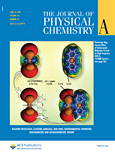
JOURNAL OF PHYSICAL CHEMISTRY A
Elevating knowledge in the realm of molecular phenomena.Journal of Physical Chemistry A, published by the American Chemical Society, serves as a leading platform for disseminating high-quality research in the fields of physical and theoretical chemistry. With an ISSN of 1089-5639 and E-ISSN of 1520-5215, this journal maintains a rigorous standard, demonstrated by its position in the Q2 category for both physical and theoretical chemistry as well as miscellaneous medicine within its 2023 category quartiles. As part of the greater ACS network, it operates with a solid Scopus rank of 76/189, placing it within the 60th percentile, emphasizing its credibility and impact in the chemistry community. The journal's objective is to enhance the understanding of molecular phenomena through innovative experimental and computational approaches, making it essential reading for researchers, professionals, and students seeking to advance their knowledge and contribute to scientific discussion. With additional open access options, the Journal of Physical Chemistry A continues to foster collaboration and the sharing of ideas in the vibrant scientific landscape of the United States and beyond.

STRUCTURAL CHEMISTRY
Pioneering Insights into Chemical FrameworksSTRUCTURAL CHEMISTRY is a premier journal published by SPRINGER/PLENUM PUBLISHERS, dedicated to advancing the study and understanding of the structural aspects of chemistry. With an ISSN of 1040-0400 and an E-ISSN of 1572-9001, this journal serves as a critical resource for researchers and professionals engaged in the fields of Condensed Matter Physics and Physical and Theoretical Chemistry. Since its inception in 1990, it has become an essential platform for disseminating high-quality research, featuring articles that explore innovative methodologies, experimental techniques, and theoretical frameworks. As evidenced by its Scopus rankings, including #192 in Condensed Matter Physics and #101 in Physical and Theoretical Chemistry, the journal occupies a respected position within the academic community, promoting interdisciplinary collaboration and insight. While it operates on a traditional subscription model, the journal continues to broaden its reach to foster knowledge exchange among scholars worldwide. With a commitment to excellence and relevance, STRUCTURAL CHEMISTRY remains a vital contributor to the scientific dialogue surrounding chemical structure and its myriad implications across various scientific disciplines.
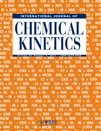
INTERNATIONAL JOURNAL OF CHEMICAL KINETICS
Fostering innovation in the study of reaction mechanisms.The INTERNATIONAL JOURNAL OF CHEMICAL KINETICS, published by Wiley, is a leading journal that covers significant advancements and fundamental research in the field of chemical kinetics. Established in 1969, this peer-reviewed journal not only emphasizes kinetics in solution and gas-phase reactions but also addresses theoretical approaches and experimental applications in various branches of chemistry including biochemistry, inorganic chemistry, organic chemistry, and physical chemistry. As of 2023, it holds a respectable Q2 ranking in Inorganic Chemistry and Q3 in the other chemistry categories, reflecting its substantial impact on the scientific community. With a commitment to disseminating high-quality research, the journal is an indispensable resource for researchers, educators, and students seeking to deepen their understanding of chemical dynamics. Its compilation of articles and reviews ensures that it remains a cornerstone for innovative studies and discussions within the field.
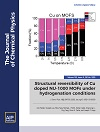
JOURNAL OF CHEMICAL PHYSICS
Pioneering Research in Physical and Theoretical ChemistryJOURNAL OF CHEMICAL PHYSICS, published by AIP Publishing, stands as a premier scholarly source within the realms of physical and theoretical chemistry, as well as physics and astronomy. With an enduring history dating back to 1933 and converging until 2024, this journal has established itself as a cornerstone of the scientific community, evidenced by its prestigious Q1 categorization in multiple fields, including medicine and general physics. It is ranked 37th out of 243 in the general physics and astronomy category and holds a commendable 39th position in physical and theoretical chemistry according to Scopus rankings, highlighting its significant impact in these disciplines. Although not an open-access journal, it caters to a wide audience of researchers, professionals, and students seeking to deepen their understanding of the interactions and dynamics of chemical systems. With its expertly curated content, the JOURNAL OF CHEMICAL PHYSICS continues to play a vital role in advancing knowledge and fostering innovation across its core subjects.

JOURNAL OF MOLECULAR MODELING
Exploring the Depths of Computational ChemistryJOURNAL OF MOLECULAR MODELING, published by Springer, is a pivotal resource for researchers and professionals in the fields of chemistry, computer science, and molecular sciences. The journal's ISSN is 1610-2940, with an E-ISSN of 0948-5023, reflecting its commitment to disseminating cutting-edge research from 1996 to 2024. Although the journal does not operate under an Open Access model, it remains an invaluable platform for the publication of innovative studies related to computational methods, theoretical chemistry, and molecular simulations. With a notable categorization across multiple quartiles—including Q4 in Catalysis and Q3 in Computational Theory and Mathematics—the journal holds a distinct rank in Scopus, highlighting its influence and contribution to the discipline. The importance of this journal lies in its ability to bridge the gap between theoretical understanding and practical applications, making it essential reading for students and scholars seeking to advance their knowledge and research in molecular modeling.

Journal of Physical Chemistry Letters
Pioneering Discoveries in Physical and Theoretical ChemistryThe Journal of Physical Chemistry Letters, published by the American Chemical Society, is a premier journal in the fields of Physical and Theoretical Chemistry, Materials Science, and Nanoscience and Nanotechnology. Since its inception in 2010, this journal has established itself as a significant platform for rapid publications of cutting-edge research that bridges various branches of chemistry, providing a critical avenue for advancing knowledge in these dynamic fields. With an impressive impact factor and a consistent ranking in the top quartile (Q1) of its categories, the journal ranks 25th out of 189 in Physical and Theoretical Chemistry and 79th out of 463 in General Materials Science according to Scopus metrics. Although it currently does not operate under an open access model, it remains an essential resource for academics seeking to disseminate their findings to a global audience. Researchers, professionals, and students alike will find invaluable insights and contributions that push the boundaries of scientific inquiry within these disciplines.
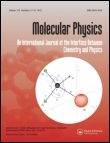
MOLECULAR PHYSICS
Driving discoveries in condensed matter and molecular biology.MOLECULAR PHYSICS, published by Taylor & Francis Ltd, is a distinguished international journal that has been advancing the fields of biophysics, condensed matter physics, molecular biology, and physical and theoretical chemistry since its inception in 1958. With an ISSN of 0026-8976 and an E-ISSN of 1362-3028, the journal provides a rich platform for the dissemination of high-quality research, evidenced by its Q3 ranking in several domains including both biophysics and condensed matter physics as of 2023. Although the journal operates on a traditional subscription model rather than an Open Access basis, its rigorous selection process ensures the publication of relevant and impactful articles. The journal's continued convergence of research until 2024 underlines its ongoing significance and adaptability in an ever-evolving scientific landscape. For researchers, professionals, and students alike, MOLECULAR PHYSICS serves as an essential resource for keeping abreast of the latest developments, fostering collaboration, and inspiring future advancements in molecular theory and applications.

Journal of the Mexican Chemical Society
Pioneering Research for a Sustainable Chemical FutureWelcome to the Journal of the Mexican Chemical Society, an essential publication for researchers and professionals in the field of chemistry. Published by the reputable SOC QUIMICA MEXICO, this journal has been a vital platform for sharing innovative research and developments in the field since its inception in 2008. With an ISSN of 1870-249X and an E-ISSN of 1665-9686, the journal provides valuable insights and contributes to the global scientific community. As of 2023, it holds a Q3 quartile ranking in miscellaneous chemistry categories and ranks #258 out of 408 in General Chemistry on Scopus, placing it at the 36th percentile among its peers. Although currently not an open access journal, it remains committed to disseminating high-quality research that supports advancements in chemical education, practice, and technology. Researchers, academics, and students are encouraged to engage with this journal to explore groundbreaking studies and enhance their understanding of diverse chemical disciplines.
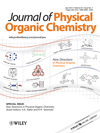
JOURNAL OF PHYSICAL ORGANIC CHEMISTRY
Innovating research in the realm of theoretical chemistry.JOURNAL OF PHYSICAL ORGANIC CHEMISTRY, published by Wiley, serves as a vital platform for researchers and professionals in the fields of organic and physical theoretical chemistry. With a rich history of publication dating back to 1988 and continuing through 2024, this esteemed journal aims to advance the understanding of the physical principles underlying organic reactions and processes. Although it operates without an open access model, the journal maintains a respectable impact factor and has achieved Q3 rankings in both Organic Chemistry and Physical and Theoretical Chemistry as of 2023, affirming its relevance within the scientific community. Researchers looking to publish innovative studies will find a competitive space given its Scopus rankings—placed at #105 in Physical and Theoretical Chemistry and #123 in Organic Chemistry. The journal not only curates high-quality research but also encourages collaboration and the exchange of ideas, making it a cornerstone for anyone dedicated to exploring the complexities of organic materials and their physical interactions.
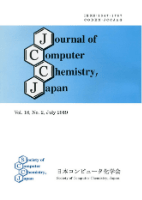
Journal of Computer Chemistry-Japan
Advancing the Frontiers of Computational ChemistryJournal of Computer Chemistry-Japan, published by SOC COMPUTER CHEMISTRY, JAPAN, is a dedicated platform for researchers and professionals in the interdisciplinary fields of computational chemistry and chemical informatics. Though the journal does not currently provide open access, it maintains a rigorous selection process for contributions, ensuring the publication of high-quality, peer-reviewed research. With a focus on advancing computational methods and techniques to solve complex chemical problems, the journal aims to bridge the gap between theoretical chemistry and practical applications, making it an invaluable resource for academics and industry professionals alike. As the complexity of chemical systems continues to rise, the relevance of computational approaches in material science, drug discovery, and molecular modeling has never been more critical. Researchers are encouraged to engage with the contents of this journal, which showcases innovative studies, methodologies, and discussions relevant to the evolving landscape of computer-aided chemistry.